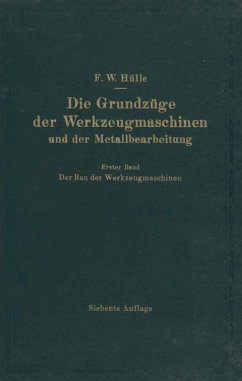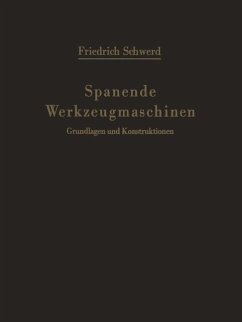
Grundzüge der Zerspanungslehre. Theorie und Praxis der Zerspanung für Bau und Betrieb von Werkzeugmaschinen
Band 1: Einschneidige Zerspanung

PAYBACK Punkte
0 °P sammeln!
One of the main objectives of the first edition of this book was the derivation of scientific metal cutting laws and their practical appli cation to the operation and design of machine tools. For this purpose cutting speed and cutting force factors (Ov, Ok,) and exponents had been established as a means for determining a "common denominator" for evaluation and comparison of metal cutting data from the industrial countries. In this way machine shops and engineering offices were no longer limited to the use of data of an often accidental nature, but could refer to a logical system of information...
One of the main objectives of the first edition of this book was the derivation of scientific metal cutting laws and their practical appli cation to the operation and design of machine tools. For this purpose cutting speed and cutting force factors (Ov, Ok,) and exponents had been established as a means for determining a "common denominator" for evaluation and comparison of metal cutting data from the industrial countries. In this way machine shops and engineering offices were no longer limited to the use of data of an often accidental nature, but could refer to a logical system of information. The wide response accorded the first edition in the industrial coun tries, the translations into several foreign languages, and the fact that abstracts were published in leading textbooks such as Dubbel's Hand book, The Tool Engineers Handoook and others, may be taken as an indication that the principles had been accepted. Although the progress made in the machining of metals rendered it necessary to revise the new edition completely, it was possible to retain these earlier principles and to expand them for covering later results. Basic conclusions can be derived in this way and data developed for machine shop practice and for further research.












